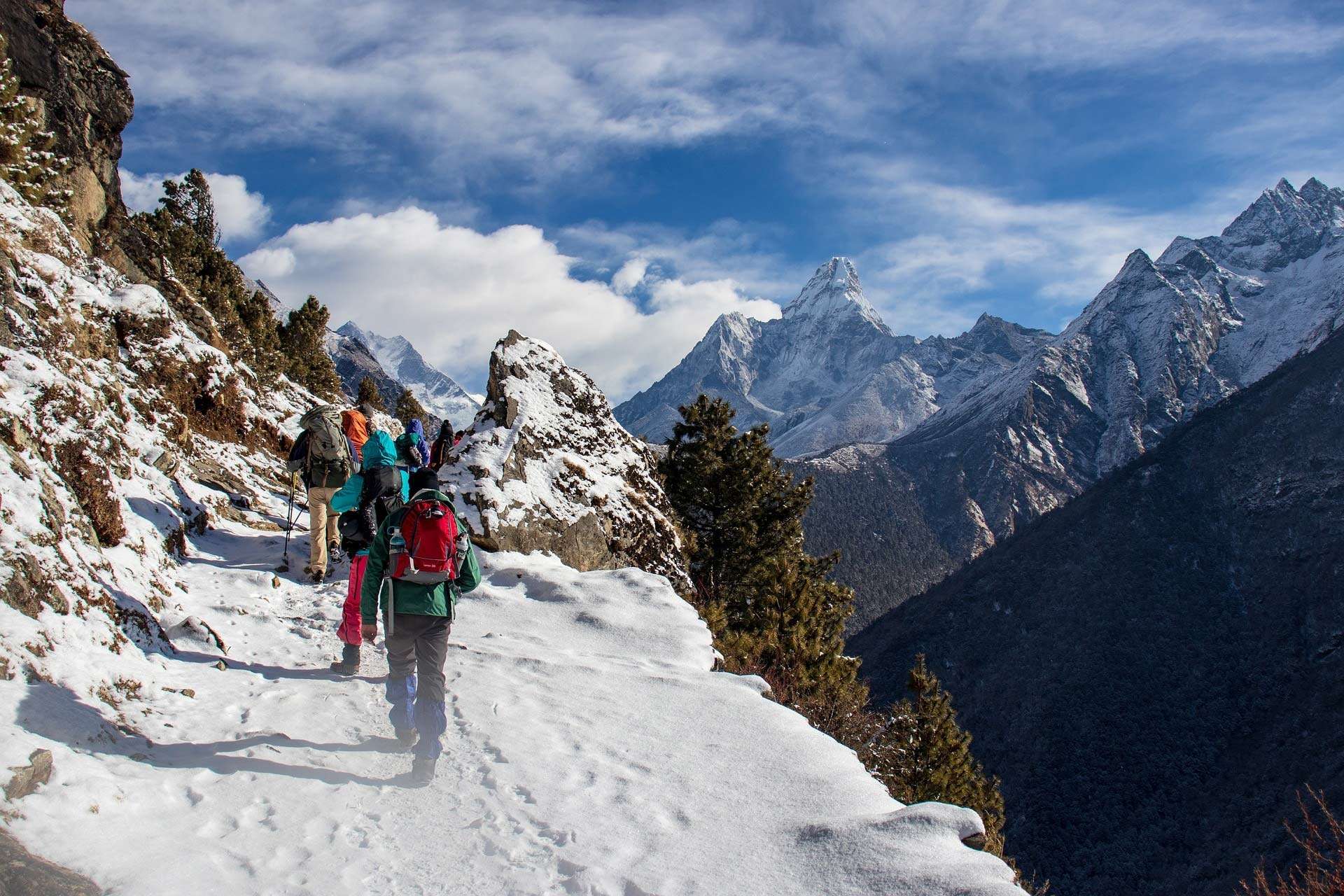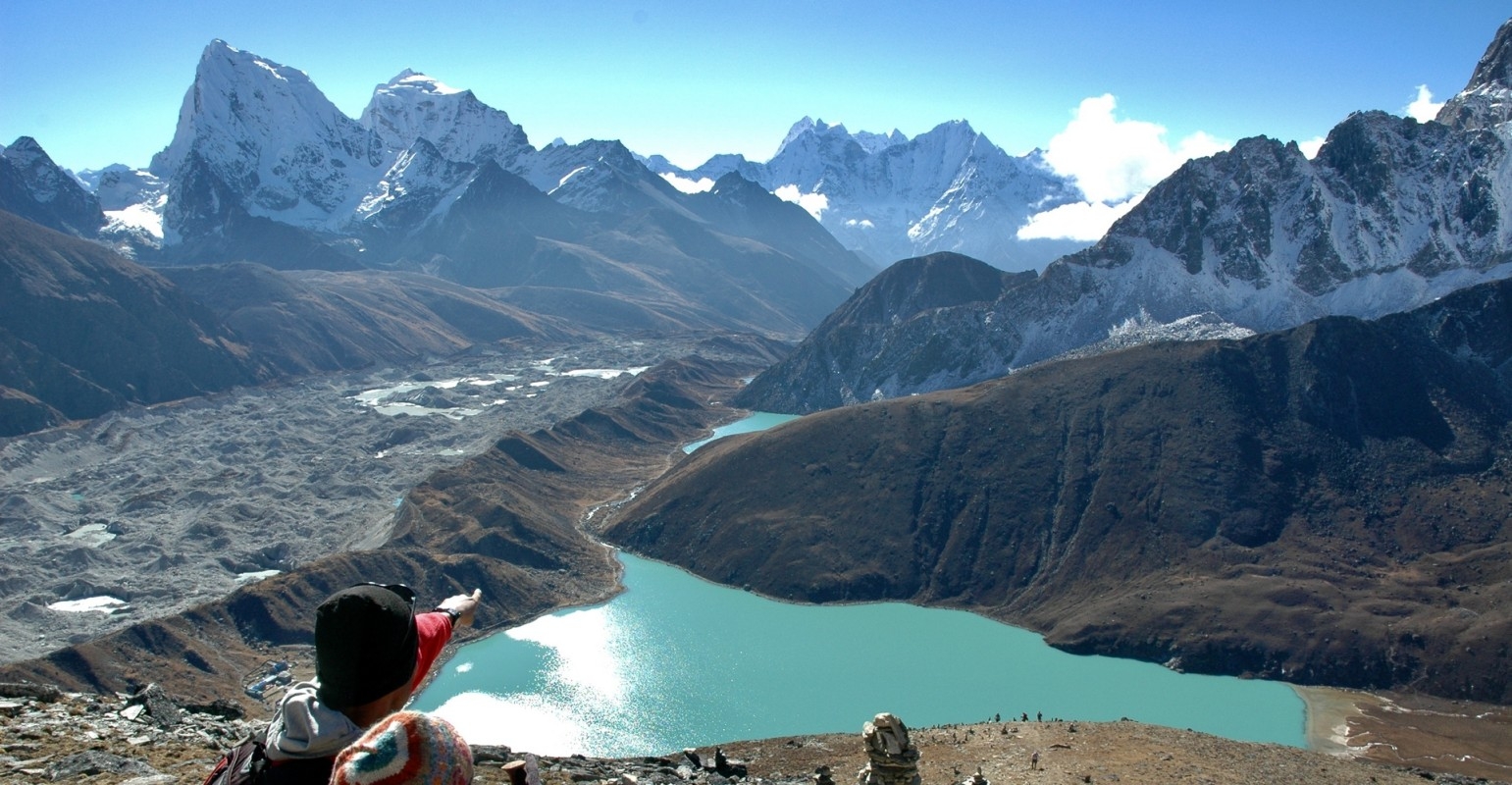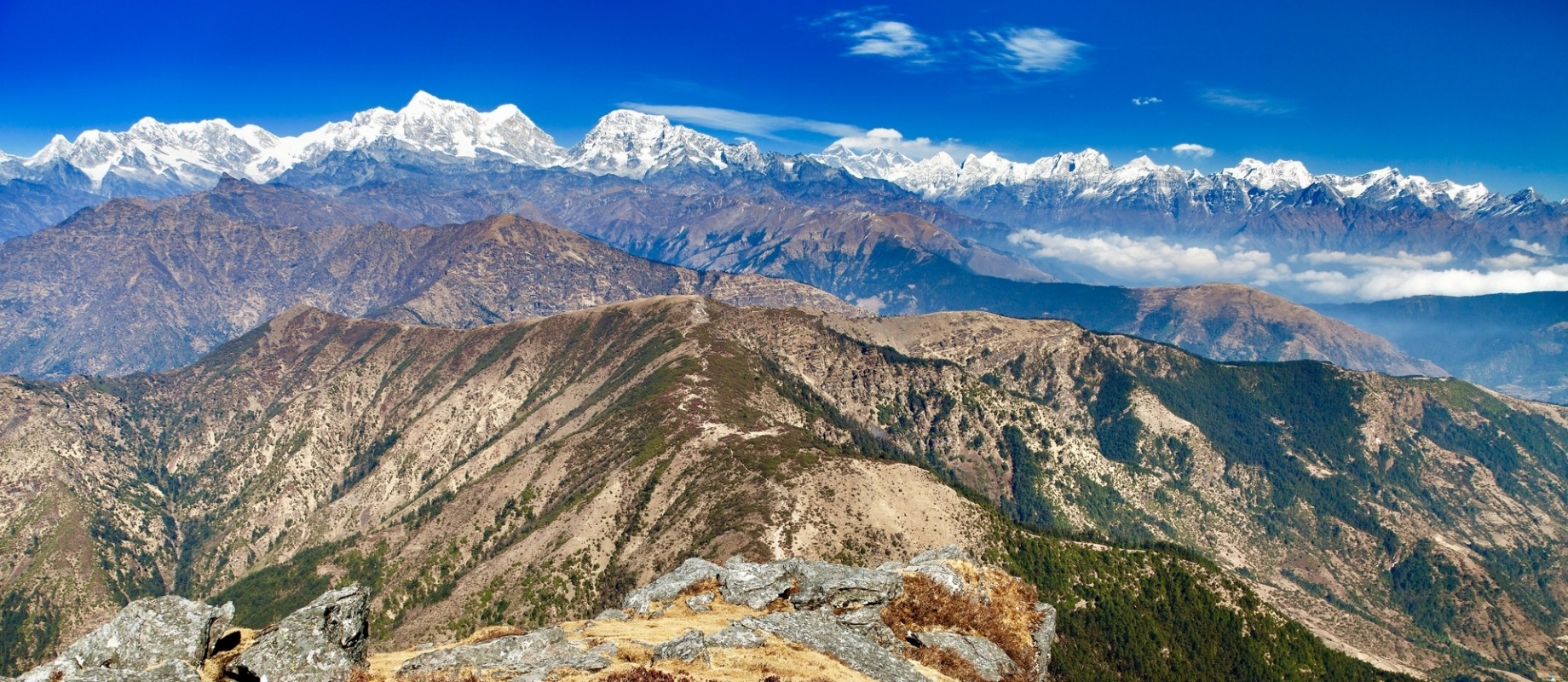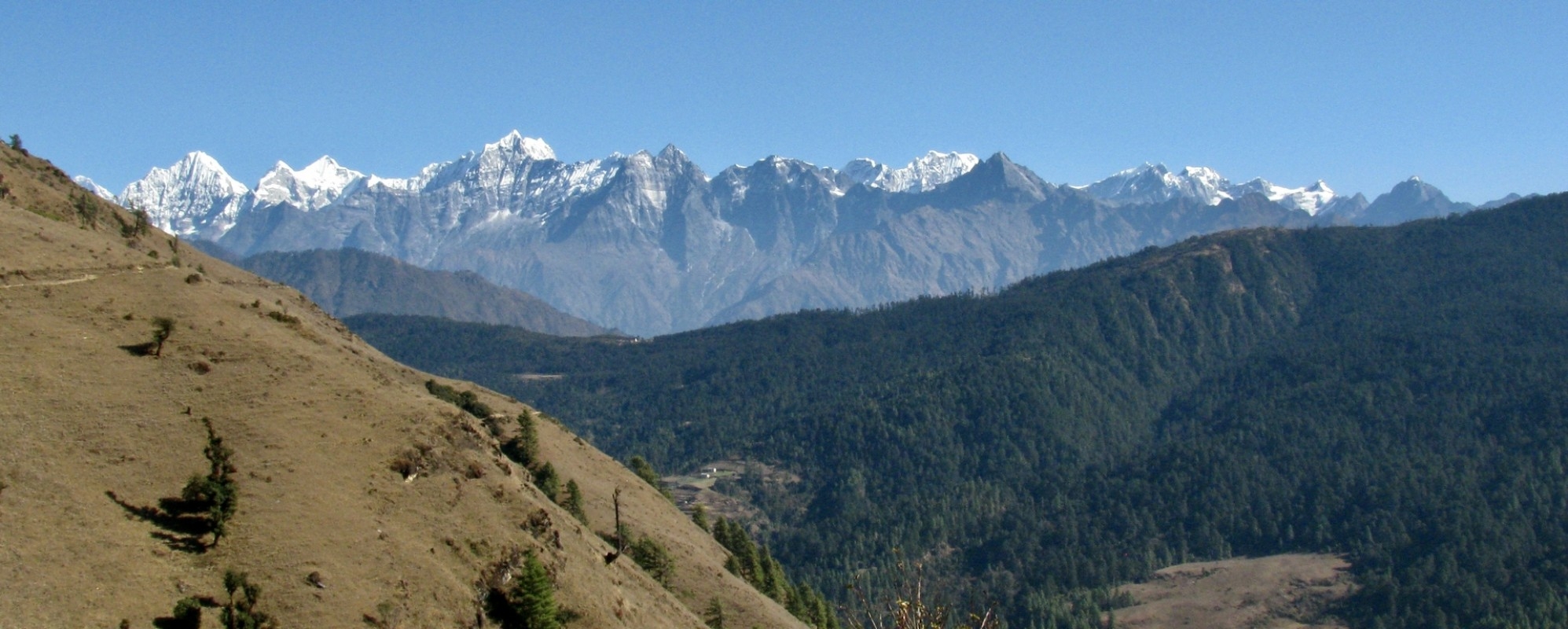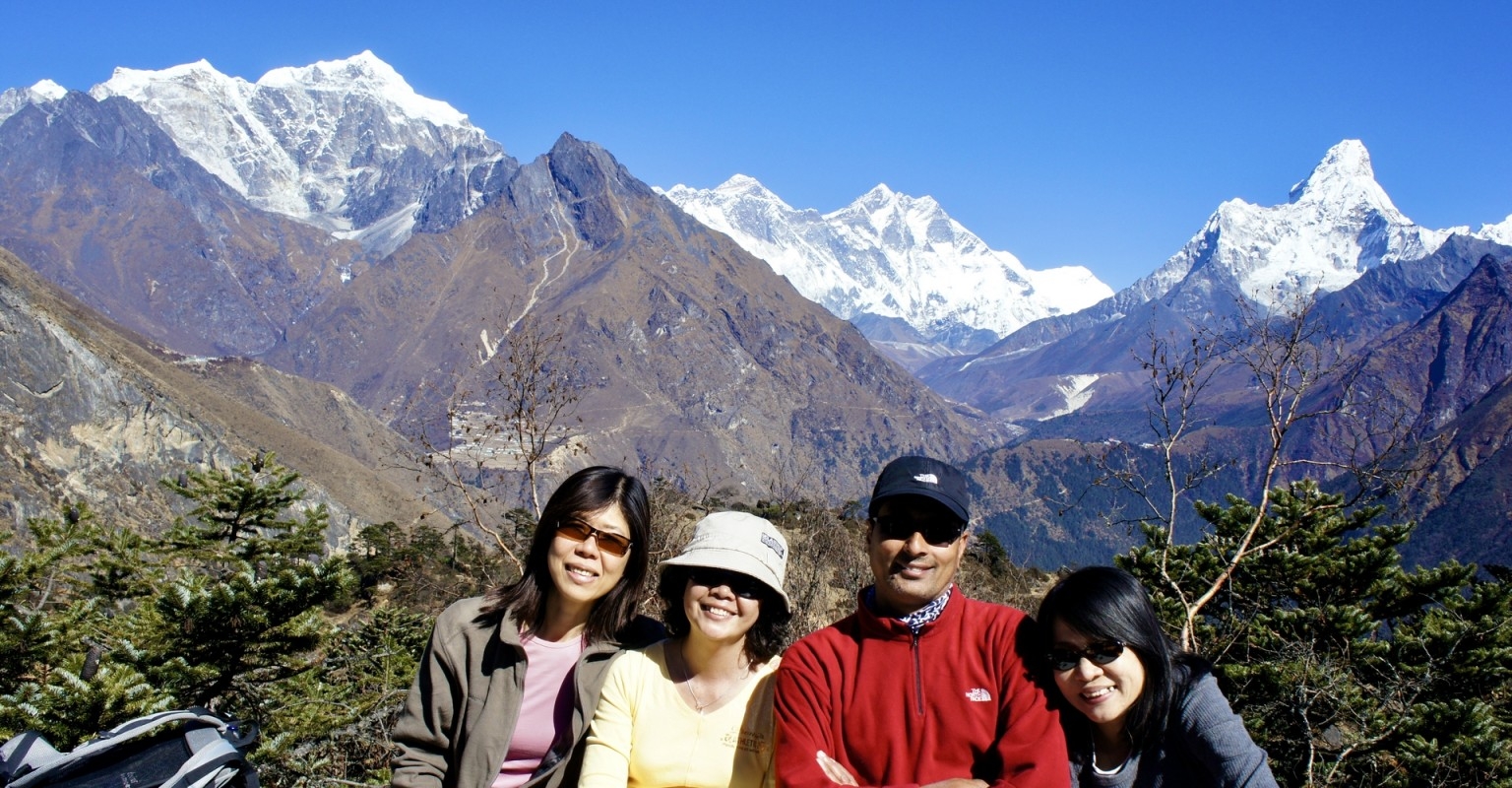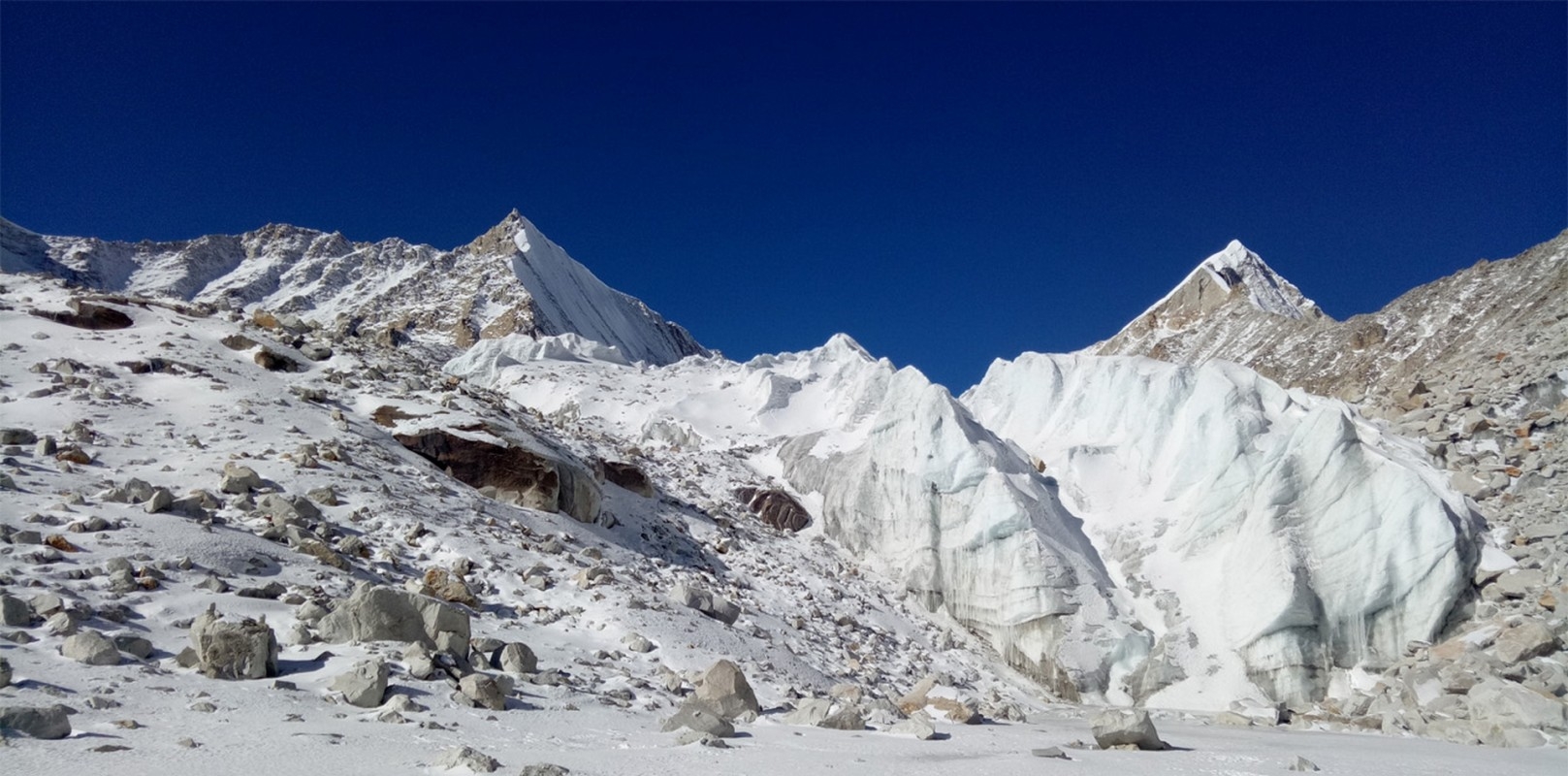

Best time to travel to Nepal :
Nepal is a country of differences with various landscapes, including towering mountain ranges, lush forests, and a vibrant cultural heritage. The best time to travel to Nepal depends on your preferences and the type of excursions or events you intend to participate in. Generally, Nepal has four distinct seasons, each with unique charms and challenges.
Autumn Season: September to November is Nepal's best time for trekking and outdoor activities. Clear skies, pleasant temperatures, and festivals like Dashain Tihar and Chhat make this period ideal for experiencing Nepali culture
Winter Season: Cold temperatures start in late November or early December, but clear skies suit budget travelers. Lower-elevation treks and skiing/snowboarding in ski resorts are popular activities.
Spring Season: From late February to May, warmer temperatures make it perfect for trekking. Rhododendrons bloom, adding to the scenic beauty. Celebrations like Holi and Buddha Jayanti occur during this time.
Summer Season: Monsoon rains from June to August make trekking challenging, but it's a great time to experience lush greenery and agriculture. Ideal for peace seekers and cultural tours of cities accessible by road.
Fitness and Training:
Trekking and climbing in Nepal's high-terrain Himalayas require physical fitness and training for a safe journey. Trekking involves walking long distances, sometimes for hours daily, over different terrain and at high altitudes. To build stamina and prepare the body, it's best to start fitness activities a few months before the trip, including cardio, strength, and endurance training.
Your journey to Nepal can be safe and successful with physical fitness, training, and preparation. Be aware of the risks and challenges, and take necessary safety measures for a fun and secure trip.
Trek Booking:
Asiana Treks and tours is a best and trusted trek and tour company operater authorized by the Nepal government. We require a 10% advance payment to book your trip, and you'll need to send us a copy of your passport, photos, travel insurance, and flight details as soon as you book a tour with us. You can use bank transfer, or any other way like Western Union, or online via our website, which you feel is easy. The remaining trip cost can be paid upon arrival in Nepal. We offer last-minute bookings, but changes may occur due to circumstances like bad weather.
Trek difficulty:
Everest three high pass trek presents a challenging yet enriching adventure. Your enjoyment of the trip will largely depend on your level of fitness. We recommend building stamina at least two weeks before the trek. Activities include jogging, running, swimming, or taking long hikes for the journey ahead.
Completing this trek is achievable even if you're new to trekking, but maintain a reasonable fitness level. Prior trekking experience can be advantageous, though optional. All you need is the readiness to hike steadily for 4-7 hours, navigating tricky terrain.
Suppose trekkers have pre-existing medical conditions, such as lung or heart diseases. In that case, they are advised to consult their physician before booking the trek to ensure their safety and well-being throughout the journey.
Entry permit and requirements (About Visa)
To visit Nepal, you need a valid passport and a visa. You can quickly get an arrival visa at entry points or Kathmandu's Tribhuvan International Airport. However, some people need a permit before they come, so it's good to check with the nearest Nepalese embassy.
Some nationalities that don't get visas from immigration entry points in Nepal are Nigeria, Iraq, Ghana, Afghanistan, Swaziland, Zimbabwe, Somalia, Palestine, and Ethiopia.
There are three types of visas as in the table below:
15 days, 30 days, or 90 days days, 30 days, or 90 days The cost varies from $30 to $125 depending on how long you want to stay. You can pay in US dollars or other significant currencies, sometimes even Nepalese rupees.
If you're coming for business, you can get a suitable visa for up to 5 years. The fee depends on how much money you're investing. If you invest less than 10 million Nepalese rupees, it's $35 per month, $400 per year, or $1000 for five years. If you invest more, the fees are lower; if you invest more than 100 million Nepalese rupees, you don't have to pay any fees.
People from SAARC countries get a free 30-day visa. Indians don't need a visa, but they must show ID, like a passport or citizenship card. Make sure your passport is valid for at least six months. And it's a good idea to have travel insurance which covers medical treatment and emergency evacuation.
Some places in Nepal require a separate permit to visit.
Tims and Permit:
To enter Everest, you need three different kinds of permits for the Everest three high pass trek is the Khumbu Pasang Lamu Rural Municipality Permit, the Sagarmatha National Park Permit, and the TIMS card.
Khumbu Pasanglamu Rural municipality permit is necessary to enter the Khumbu region. It can obtained in Lukla or Monjo. For foreigners, it costs NPR 2000 (USD 17) per person for the first four weeks and NPR 2500 (USD 25) afterward. Remember, you can't get this permit in Kathmandu.
TIMS Card The TIMS card is essential for guides, porters, and clients in emergencies. It costs USD 20 and is issued by TAAN Nepal via register Trekking company.
Sagarmatha National Park entry permit, 3300Rs Per person, Rs 26 US$ in equivalent.
Travel Insurance:
Asiana Treks and Tours strongly advises our valuable clients to have travel insurance that protects adventurous activities at high altitudes above 6,000 m. This comprehensive coverage, which includes accidents and emergency help, will provide you with the peace of mind you need during your high-altitude adventure.
However, you can get this insurance online from different companies. Here are some popular choices for people doing the Everest three high pass trek.
USA and Canada: Tugo, United Health Care, World Nomad, Blue Cross
Australia and New Zealand: Fast Cover, Allianz Australia
Singapore: Ergo, World Nomad Explore plan level 3.
Europe: Europe Assistance, Austrian Alpine Club, Allianz Europe.
India: ICICI Lombard
But make sure the policy covers trekking up to 5985,000 m altitude. These are just suggestions, so the policies and what they cover might vary. It's best to contact these insurers directly to ask about what they offer before you buy anything.
Trip Safety:
We highly give top priority. We provide experienced guides with first aid kits and necessary safety gear to ensure a safe hand. Our team monitors weather and trail conditions and takes precautions to avoid risks. Before starting the trek, we discuss the trip to provide a clear understanding and ensure a reliable experience.
Guide and Porter Arrangement:
Our company, Asiana Treks and Tours, focuses on responsible tourism in Nepal. We make sure our guides and porters are well-trained in trekking and mountaineering. They know a lot about the areas we go to, including geography, history, customs, and culture. We train them regularly in safety, first aid, and environmental conservation. We follow guidelines to treat our porters fairly, providing them good pay, accommodation, and meals during treks. Our guides and porters are essential team members, and we appreciate their hard work. When you trek with us, you support ethical tourism in Nepal, making your trip meaningful and memorable.
Asiana Treks and Tours prioritizes your safety and enjoyment. Our knowledgeable guides, reliable equipment, and safety measures ensure a great trekking experience in Nepal.
Packing Checklist:
When planning a trip to Nepal, packing the right gear is crucial for a successful journey. This includes clothing, equipment, and accessories tailored to your trek and the time of year. If you're trekking, pack light unless you're hiring a porter. Consider renting or buying gear in Nepal to save space. Ensure your equipment is high-quality and in good condition to avoid problems in the mountains. Take our suggestions to prepare your baggage correctly. Lastly, double-check the weather forecast and ensure you have all the necessary items for a safe and comfortable trip.
Teahouse Facilities:
Guest houses are familiar places to stay while trekking in Nepal. They're simple lodges with rooms, eating areas, and toilets. Guest houses vary in quality but are affordable and convenient for trekkers. They offer a cozy place to rest after walking and serve Nepali and international food. Rooms usually have twin or bunk beds, and bathrooms are shared. They provide blankets and pillows. Our company offers sleeping bags, but it's a good idea to bring one for extra comfort.
Safe drinking water:
Staying hydrated is essential while trekking in Nepal's Himalayan region. Tap water is available in lower areas, but you must purify it to keep you safe. Guest houses have mineral water along popular routes but can be costly. Our guide will assist you in buying a boil and filtering water. However, we suggest bringing a water filter or purification tablets and a Steri pen to treat water from natural sources along the trail, which is a good idea.
Toilet Facilities:
Most teahouses have Western-style flush toilets during mountain treks, especially at lower elevations. But as you go higher, find simple squat toilets along the trails and teahouses at higher altitudes. These toilets usually have water or toilet paper, but it's a good idea to bring your toilet paper just in case. You can also use restrooms at nearby teahouses or find a private spot along the trekking routes.
Internet Connectivity:
While trekking in the Himalayan region of Nepal, connecting with your family and friends is also a good idea. You can find internet access at some teahouses and lodges, but it might cost extra. The signal might be weak because of the remote location. You can also get internet access using a local SIM card and data packages available at Kathmandu airport or nearby shops. You'll have a passport-sized photo and a copy of your passport to get a SIM card. It's a good idea to compare prices and data packages from telecom companies like Ncell and Nepal Telecom before buying. Knowing about teahouse connectivity. Our guide will suggest connections.
Altitude Sickness and Acclimatisation:
Altitude sickness is common among hikers in Nepal's Himalayan Region. It happens when the body doesn't get enough oxygen at higher elevations, causing headaches and dizziness. Acclimatization is essential to prevent this. It means gradually getting used to higher altitudes by resting, drinking fluids, and ascending slowly. Spending an extra day at lower elevations before going higher is the best way to avoid altitude sickness. Hydration is the main issue during trekking to prevent dehydration, which can worsen altitude sickness. Drinking plenty of water, tea, and soup can help. Trekkers can also take medicines like acetazolamide or dexamethasone to relieve symptoms, but it's best to consult a doctor first. Proper acclimatization techniques, like "climb high, sleep low," and staying hydrated, can reduce the risk of altitude sickness. Booking with an experienced guide can ensure you get the right advice and help during your trek.
History of Lukla airport:
In 2008, Lukla Airport was bestowed with a new name: Tenzing-Hillary Airport, a tribute to the first people to conquer Mount Everest, Tenzing Norgay Sherpa and Sir Edmund Hillary. This airport, with its runway measuring a mere 527 meters long and 30 meters wide, is a testament to human ingenuity and the spirit of adventure. Its unique uphill slope of almost 12% aids planes in slowing down during landing. The airport was established in 1964, and its runway was paved in 2001, marking a significant milestone in aviation history, situated at 2860 meters.
Flight and weather conditions:
Flights depend on weather conditions and are often postponed or canceled due to low visibility and weather conditions. The airport's location makes it one of the world's most dangerous, with a short runway on a steep slope that makes it challenging for pilots. Lukla Airport has a short runway on a steep slope, making it challenging for pilots due to the rugged terrain. Unpredictable weather can lead to flight delays or cancellations, adding a touch of adventure to your plans. Please be sure to prepare for the plan; we strongly recommend allocating an additional three days in case of unfavorable weather conditions. This will help avoid long-day waits in Ramechhap. However, Lukla flights depart from Ramechhap/Manthali during peak seasons in March, April, May, October, and November. Ramechhap/Manthali is approximately a 4-to 5-hour drive from Kathmandu. Conversely, flights operate from Kathmandu during non-peak seasons, such as January, February, June, July, August, September, and December. Flights from Kathmandu take about 35 minutes, while flights from Ramechhap take 15-20 minutes.
Alternatives like helicopter flights or ground transportation exist if your flight is canceled for over two days. We advise you to fly to Phaplu and start your trek from Phaplu or opt for a 4WD drive to Salleri and start your trekking or Annapurna Basecamp Trekking and begin your journey. This will help avoid long-day waits in Ramechhap. However, these options might extend your itinerary. We recommend booking your flights in advance, especially during peak seasons, to avoid such situations. This ensures you have a seat reserved and reduces the risk of last-minute changes to your itinerary.
Arrive at the Tribhuwan international airport where you will be welcomed by our representative and transferred to your hotel. This day is simply an arrival day and there will be no any organized activities. So, you will have some free time to relax or walk around for local sights. A pre-departure meeting will be held early evening and you will be introduced with your trekking guide. Overnight at hotel in Kathmandu
Today after breakfast, we start a guided sightseeing to major historical and religious sites in Kathmandu. Some of these landmarks are considered World Heritage Sites that include the historic Durbar Square, the sacred Hindu temple of Pashupatinath, the famous 'Monkey Temple' (Swayambhunath) and Buddhists shrine (Buddhanath) which is one of the largest Stupas in the world. Overnight at hotel in Kathmandu
An early morning wake up and transfer to the domestic airport to board the flight to Lukla. We take off to our destination on a 35 min scenic mountain flight. After a cup of tea at local Lodge in Lukla we are treading on the legendary “Everest Highway” which heads downwards through the alpine valley following the “Dudh Kosi” or milk river (named after its milky colour from glacial silt). We reach Phakding after 3hrs walk and end our first day here. Overnight at lodge
Today we walk mostly uphill through the alpine valleys. We cross Dudh Kosi River a few times before we reach Namche Bazaar, the Sherpa capital of the Khumbu region. On a clear day you get panaromic views of Everest, Lhotse, Thamserku, Kusum Kangru, Kwangde and Taweche on the way to Namche Bazaar. Overnight at lodge
Acclimatization is important before proceeding to higher altitudes. This is the first acclimatization day in Namche bazaar that everyone should make into their Everest region trekking itinerary. You can explore around and relax. Overnight at lodge
The trail to Thame heads out from the Namche Gompa and leads up to Thamo. It is pretty steep climbing to Thame from Thamo, so it would be better to spend the night in Thame. It is a small village that offers some nice views of surrounding peaks. Here you will visit an interesting Gompa . Overnight at lodge
We walk through Nakpa Valley which falls on the old trade route of Tibet. During the trek you can visit to Darkyachhulung peak, Marlung sacred site of Warfield, and Lake Cho Relmo.
The trail to Gokyo is a gradual ascent up the valley via Renjo La Pass. After crossing the pass we trek down through patches of birch and rhododendron forest and small yak-grazing pastures until we reach Gokyo. The Renjo La Pass route is off the beaten track. From the pass, we can have a glimpse of the Gokyo lake on one side, the Rermo Pokhari lakes on the other side. Overnight at lodge
Today, early in the morning we climb Gokyo peak at elevation of 5280m. From the top of the peak we will have stunning views of the beautiful Gokyo valley, the massive Ngozumpa Glacier and an incredible panoramic views of the entire Khumbu Himalayas, such as Everest, Lhotse, Nuptse, Makalu, Cho-Oyu and Gychung Kang . Those who want to explore the glacier and Gokyo peak are much rewarded. After noon we continue trek to Thangna village which take zentle down 2 to 3 hour overnight stay at Thangna.
We wake up early in the morning and start 20 minute gradual down then our climb and cross Chola pass. This is the route to Everest Region where you can have a beautiful view of Amadablam, Cho-latse, Barnutse, Makalu Lhotse. After crossing the Chola Pass you will descend towards approximate 1000 feet and again make some ascents and descents until you reach to Dzongla where you will have overnight stay at lodge in Zongla.
The trail from Dzongla undulates gently above a small glacial lake and passes along the beautiful summit of Cholatse and Taboche and the small Chola glacier from Zongla to Labuche takes 3 hour then continuous to Gorakshep You will follow the contour of the hill and veer off towards the North and eventually descend into the valley and reach Gorakshep overnight at Gorakshep.
Today is our special day early morning cim up to Kalapatter and after that we will set foot at the coveted Everest Base Camp. We will spend some hours at Everest Base Camp, have lunch and head out to Lobuche. The path is quite rocky and it moves along the bank of Lobuche Glacier. While trekking, you can enjoy the spectacular views of Cholatse, Tawache, Ama Dablam, Pokalde, Thamserku, Kantega and many other peaks.
Today we cross Kongma la (pass; 5535m) and continue trek to Chhukung. While trekking we will enjoy spectacular view of the surrounding mountains, especially Lhotse’s massive south wall.
We will trek a few hours up along the Imja Kola to Chhukhung, a seasonal herding village nestled under Ama Dablam, Lhotse, the Nuptse wall, Peak 38 and Island peak, After lunch we have the option to climb Chhukhung Ri, a climbing peak with two summits, the higher at about 5530m and then descend to Dingboche for overnight stay
The trek continues through summer pastures along the trail. The trail descends the left flank of the Dudh Kosi valley to Tengboche, where we will visit the Tengboche Monastery, spiritual center of the Khumbu region. The descent is short and we will enjoy views of Mt. Amadablam and on clear days we can see Mt. Everest and its surrounding peaks. Overnight at lodge
Today we start our long 5 hour descent to Monjo. We will have our lunch in Namche bazaar and then continue our trek descending until we reach the village of Monjo (2,950m) for overnight.
The next morning we head for Lukla. In the end we spend more time descending this day. During this day we see many new groups on the trail heading out to Namche. At a teahouse at Lukla we will toast over a beer the incredible trip we just finished and spend some time reflecting over our experiences.
We pack up early and head for the airstrip to catch a flight back to Kathmandu Upon arrival in Kathmandu the rest of your day is free to do your own things. You could do some last minute shopping and packing, or send a few post cards home or even go down for a stroll to Thamel.
